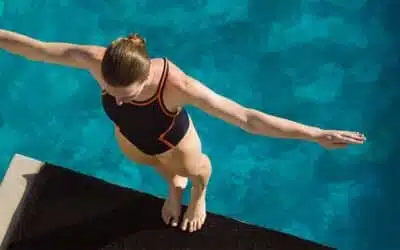The illusory dragon

Written By Paul Baffier
Blog | Dzogchen Testimonials
In “The illusory dragon” Paul talks about the illusions of the pre-spiritual path or how the procrastination prevents from really starting.
The illusory dragon
There’s a saying by Sakya Pandita: “There are some who prepare for spiritual practice all their lives, who die, and who continue to prepare”.
That’s what I’ve always been afraid of: not starting. Always hesitating, on the edge, not taking the plunge. Procrastinating, and finally turning away. Out of fear. Fear of being afraid.
Spiritual practice scared me because it was an unknown world.
What’s more, it was full of prohibitions: it was the place where “I was going to lose myself”, “join a cult”, “abdicate my free will and my faculty of judgment”, “stop thinking”.
It was also a delight in transgression, in borderline sensations. An adolescent crisis. A total existential crisis. Civilizational. The thing that would question everything. The whole thing.
It was full of fantasies: the great leap into oblivion. Putting an end to yourself. Dying without dying. Going beyond oneself, surpassing oneself. The ego diluted.
It was also the place of rest, of ultimate relief, the place where I would succeed in doing nothing. It was where I would find peace, the end of conflict. A kind of burrow where I could curl up and the world would stop spinning. An instinctive animal that falls asleep in the warmth.
“Rather than looking for techniques to heal, I looked for practices to observe.”
It was also a promontory of dominance: the mount from which I could see everything, gauge everything, defuse all the rules of the game, guess all the cards. To be above the fray. The wise man who doesn’t meddle in the fate of the world, but understands its inner workings. A wise man who contemplates with a wise eye.
For all these reasons, I didn’t start any spiritual practice. Because I wanted to be all these figures, instead of being me. Who is me? That’s the question. I didn’t want to start looking for where that thing was: right there, where the suffering was. Suffering that didn’t want to see itself and always turned to something else to escape. Always another role model to imitate, a new project to start, a new cause to fight for. It was this suffering that denied itself and struggled to invent a life for itself.
So that’s when I started looking. Little by little. It was the beginning of something. I didn’t care if it was me or not: it was there. It was no longer running away from suffering, and it was honest. Without figure, but also without remorse, without unattainable excess. Neither too small nor too big, measurable: the measure of suffering, followed, felt, step by step.
I looked at my suffering day after day without trying to control it or cure it at once, without trying to be wise or happy all at once; without trying to go beyond it, me, the human being who was there. Just being there.
And so instead of looking for techniques to heal, I looked for practices to observe. And since my suffering was the foundation of my humanity, my very being, I began to find it. My suffering, my shadow.
That’s what I began to practice and still practice: seeing my suffering as a shadow. This suffering that I had so much put aside and repressed, pushed to the very edge of consciousness, was part of the family, not separate from me. It was a part of me, and when I began to meet it again, to talk to it again, it didn’t seem so frightening. After the first moment of discomfort, we got to know each other and became good comrades. Not to the point of becoming masochists, no, but to the point of recognizing her when she’s around, without running away from her: when she sounds the alarm, I lend her an ear, listen to her lesson, tune in to her song.
This is a useful skill in times of crisis: knowing how to listen to what your suffering is saying.
As in any authentic, honest relationship, reconnecting contact with it means gaining access to its reality, its truth. And access to the truth of suffering means access to the vibrant heart of humanity that lives within us. It means reconnecting the link with the very life we’re trying to live. So, instead of bearing it as an avalanche of problems to be solved, it becomes a great adventure to be traversed: unsolvable problems become initiatory trials, and from victim to knight.
A knight who has the courage to look into the heart of suffering and observe its primordial nature, free from all worries, free even from the pursuit of happiness. A knight who, without blinking an eye, can observe the movement of suffering and recognize in it the movement of primordial nature, never really obscured, never really hidden. It was always there, like a secret of eternity! So little guarded… Guarded? Yes, it was: by this false dragon of suffering that never wanted us to fight it, but always wanted us to look into its eyes.
Maybe that’s what it means to know how to start: to stop trying to kill the dragon and learn to look at it. So that, one day, you can ride it and fly to the sky with it.
More Posts
High Diving
In “High Diving” by Mila Khyentse, everything is about diving and hovering… in the Olympic Games of Great Perfection.
Nenikekamen!
With “Nenikekamen!” Grégoire compares the marathon, the flagship event of the Olympic Games, to the Dzogchen path.
Opening Ceremony
Nils compares the Olympic Games Opening Ceremony to the introduction in Dzogchen, kicking off the Great Perfection Summer Games series!





